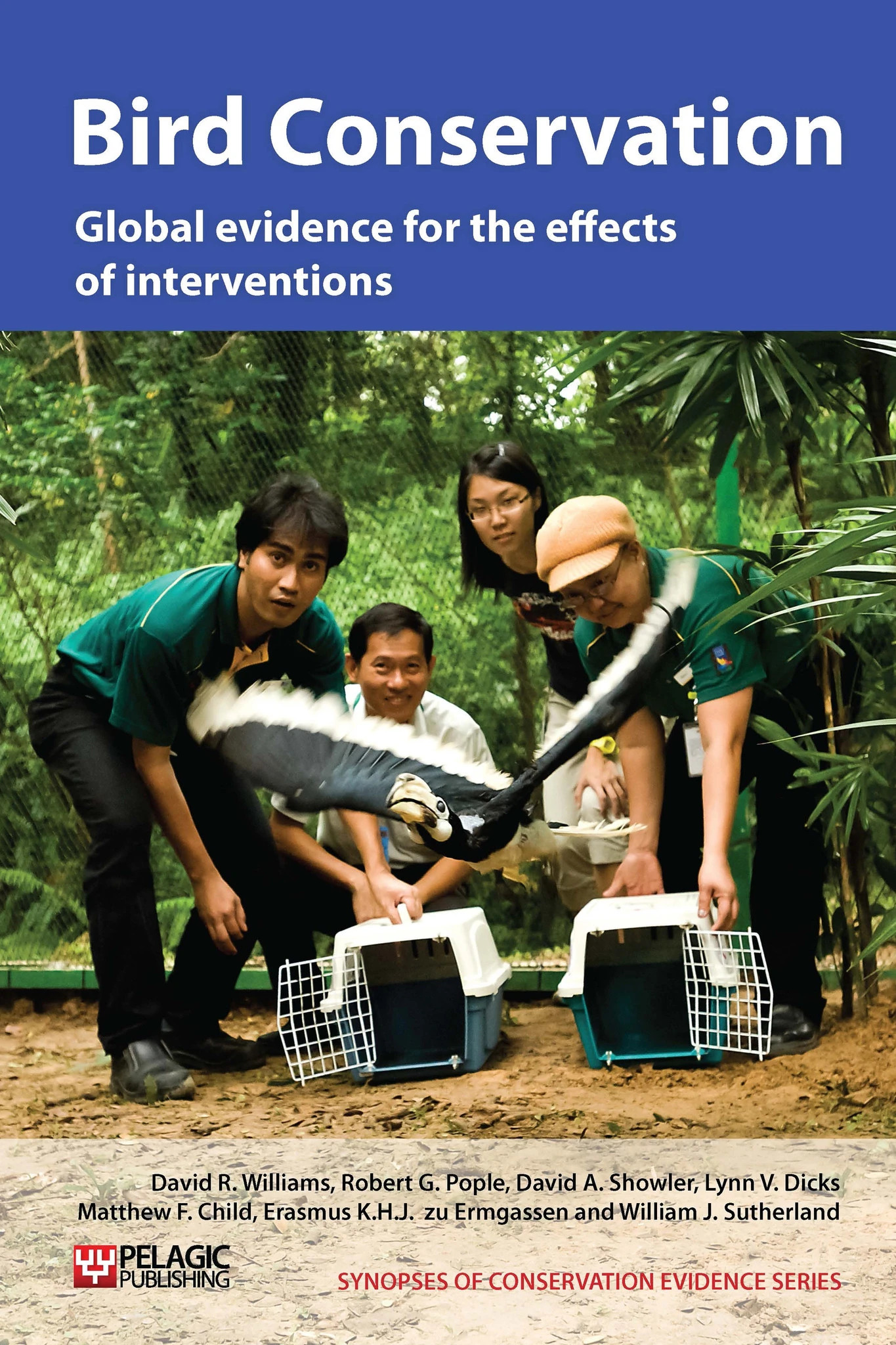Provide supplementary food for vultures to increase adult survival
-
Overall effectiveness category Unknown effectiveness (limited evidence)
-
Number of studies: 3
View assessment score
Hide assessment score
How is the evidence assessed?
-
Effectiveness
18% -
Certainty
18% -
Harms
0%
Study locations
Supporting evidence from individual studies
A study in California, USA, between February 1971 and May 1973 (Wilbur et al. 1974) found that Californian condors Gymnogyps californianus fed on at least 47 of 83 carcasses provided over the study period. Another 27 carcasses may well have been fed on and the remaining nine were taken by black bears Ursus americanus before condors could feed. Carcasses were mainly mule deer Odocoileus hemionus. This study is also discussed in ‘Provide supplementary food to increase reproductive success’.
Study and other actions testedA before-and-after between 1969 and 1989 in the western Pyrenees, Spain (Donazar & Fernandez 1990), found that the population of griffon vultures Gyps fulvus increased from 282 pairs (in 23 colonies) in 1969-75 to 1,097 pairs (46 colonies) in 1989 following the initiation of multiple conservation interventions including the installation of feeding stations between 1969 and 1979. However, the authors note that only two of six feeding stations were used by vultures and food was never apparently a limiting factor for the population in the study area. This study is also discussed in ‘Habitat protection’, ‘Restrict certain pesticides or other agricultural chemicals’ and ‘Use legislative regulation to protect wild populations’.
Study and other actions testedA study in the Negev Desert, Israel, in April-August of 1989 and 1990 (Meretsky & Mannan 1999) found that adult Egyptian vultures Neophron percnopterus were able to dominate a feeding station supplied daily with 5-10 kg of chicken, but not a station supplied approximately twice a month with large amounts (20-350 kg) of meat. Peak numbers of vultures were higher at the irregularly-stocked station (30-40 vultures present at once vs. 20-30) but they were sometimes excluded by mammals (e.g. striped hyaena Hyaena hyaena) or Eurasian griffon vultures Gypus fulvus, which did not occur at the regularly-stocked station.
Study and other actions tested
Where has this evidence come from?
List of journals searched by synopsis
All the journals searched for all synopses
This Action forms part of the Action Synopsis:
Bird Conservation
Bird Conservation - Published 2013
Bird Synopsis





)_2023.JPG)














